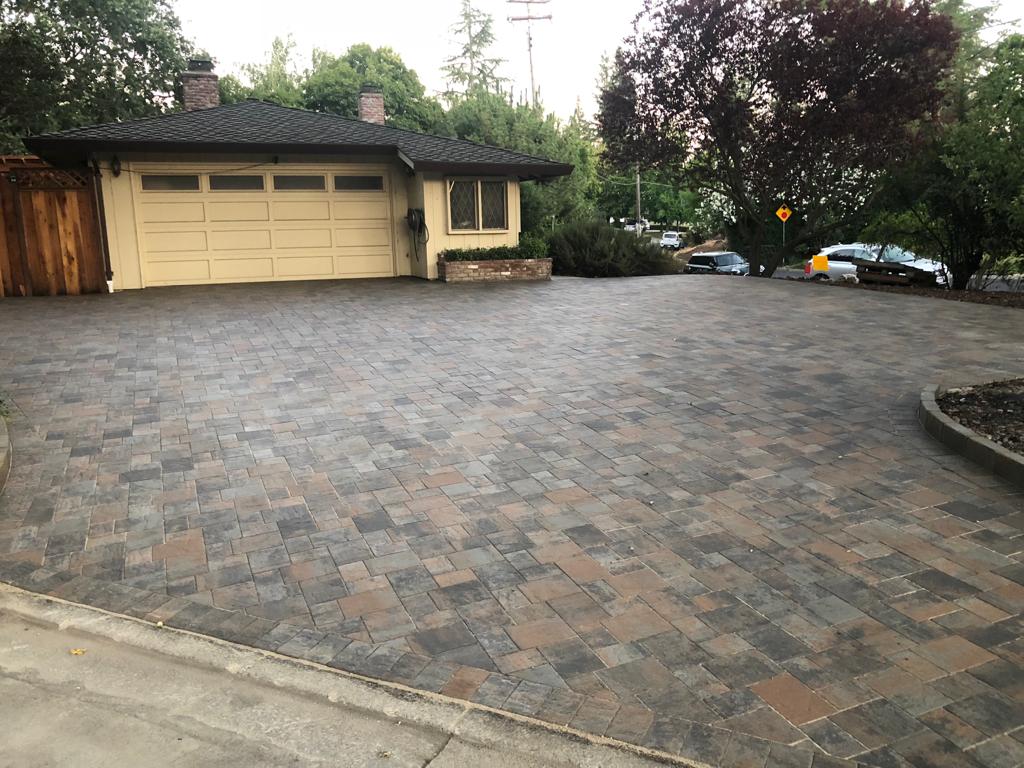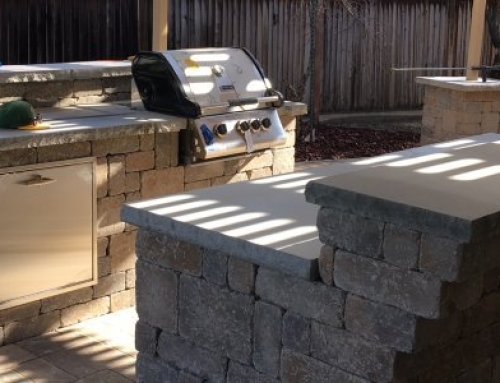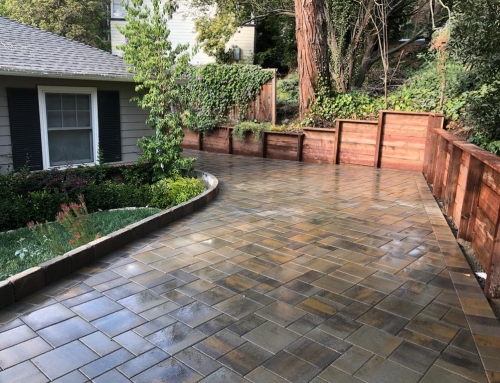When designing or renovating an outdoor space, the decision to use pavers is often a no-brainer. They’re durable, visually appealing, and can be used in everything from patios and pathways to driveways and pool decks. But when it comes to installation, homeowners often find themselves wondering: Is it better to put pavers on ground or concrete? And what about long-term durability—how long do pavers last? Can you even lay pavers directly over existing concrete? And while we’re at it, what are the disadvantages of concrete pavers?
This blog post will break down each of these common concerns, providing you with a complete guide to making the best paving decisions for your outdoor projects.
Ground vs. Concrete: Which Is Better for Installing Pavers?
Option 1: Installing Pavers on the Ground (Soil or Sand Base)
This is the most common method for laying pavers. It involves excavating the ground, compacting the soil, adding a gravel base, and then leveling with sand before placing the pavers.
Pros:
-
Flexible Surface: Pavers laid on the ground are slightly flexible and can shift with temperature changes or minor ground movement without cracking.
-
Drainage Efficiency: Water can permeate through the gaps between the pavers and the layers below, preventing pooling or runoff issues.
-
Easier Repairs: If one paver gets damaged, you can easily remove and replace it without affecting the entire area.
-
Cost-Effective for Large Areas: Since it doesn’t require an underlying concrete slab, it’s often more budget-friendly.
Cons:
-
More Labor-Intensive: Requires excavation, leveling, and multiple layers of materials.
-
Settling Risks: If not compacted properly, the pavers can sink or become uneven over time.
-
Maintenance: Weed growth and sand displacement may occur, requiring periodic upkeep.
Option 2: Installing Pavers Over Concrete
This option is gaining popularity for areas where concrete already exists—like old patios, walkways, or driveways.
Pros:
-
Simplifies Installation: You skip the excavation and gravel/sand layers.
-
Adds Elevation: If you need to slightly raise the patio or walking surface, adding pavers on top of concrete helps.
-
Durability: You’re doubling up on strength—concrete plus paver layers.
Cons:
-
Poor Drainage: Water may not drain properly and could get trapped between the pavers and concrete, leading to mold or mildew.
-
Adhesion Issues: Pavers may shift or lift if not properly secured with mortar or edge restraints.
-
Heat Retention: The combination of concrete and pavers may retain more heat, making surfaces hotter in summer.
-
Not Ideal for Every Area: Cracked or damaged concrete slabs are not a good base. You’d be building over a failing foundation.
Conclusion:
If you’re starting fresh, laying pavers on a compacted ground base is usually the best long-term solution. However, if you have an intact concrete slab and want to upgrade the look without a major tear-out, laying pavers on top of concrete can be a valid shortcut—with the right precautions.
Can I Lay Pavers Directly on Concrete?
Short answer: Yes, you can. But should you?
How to Do It Properly:
If you choose to lay pavers over concrete, there are a few key things to keep in mind:
-
Check for Drainage: Make sure water can run off the surface. You may need to install drainage channels or use permeable pavers.
-
Use a Bonding Agent: If you want permanent adhesion, use mortar or a polymeric adhesive to secure the pavers to the slab.
-
Add a Sand Layer: Some installers prefer to place a thin layer of sand between the pavers and the concrete for minor leveling and cushioning.
-
Edge Restraints: Without them, pavers on concrete can shift over time.
Situations Where It Works Well:
-
Rejuvenating an old concrete patio or walkway
-
Adding aesthetics without excavation
-
Urban settings where excavation isn’t practical
When to Avoid:
-
Concrete with cracks, settlement, or drainage problems
-
Driveways or high-traffic areas where structural integrity is crucial
Pro Tip: If you’re unsure whether your concrete base is suitable, a quick consultation with local paving contractors can save you time and money in the long run.
How Long Do Pavers Last?
This is one of the main reasons homeowners choose pavers in the first place—their exceptional durability.
Lifespan of Pavers:
-
Concrete Pavers: Typically last 25–50 years depending on climate, usage, and installation.
-
Brick Pavers: Can last over 100 years (just look at old colonial roads!).
-
Natural Stone Pavers: Extremely durable; may last 50–100+ years with proper care.
What Affects Longevity?
-
Installation Quality: A properly compacted base and correct joint sand reduce movement and weed growth.
-
Traffic Load: Driveways will wear faster than patios or garden paths.
-
Maintenance: Regular cleaning, joint sand replenishment, and sealing (every 3–5 years) extend life.
-
Climate: Freeze-thaw cycles can cause expansion and contraction. Flexible paver systems fare better than rigid concrete in such climates.
In short, when installed and maintained correctly, pavers can outlast most other types of outdoor surfacing, including plain poured concrete.
What Are the Disadvantages of Concrete Pavers?
Though popular and practical, concrete pavers aren’t perfect. Here are some common downsides to consider:
1. Color Fading
Concrete pavers are typically dyed to achieve different hues. Over time, UV exposure and weathering can cause colors to fade, especially if not sealed regularly.
2. Weed Growth
Though not a structural issue, weeds can grow between paver joints if the sand washes out or is poorly maintained.
3. Initial Cost
Paver installation can be more expensive than plain concrete due to the labor and material involved. However, they tend to have lower maintenance and repair costs over time.
4. Surface Shifting
Without proper edge restraints and a solid base, pavers can shift or sink over time, leading to uneven surfaces and tripping hazards.
5. Sealing Requirements
To maintain their appearance and resist staining or fading, concrete pavers often need to be sealed every few years.
6. Slippery When Wet
Some smooth-finish pavers can become slippery in rain, especially around pools or on slopes.
Despite these downsides, the versatility and aesthetic appeal of pavers still make them a top choice for Backyard Pavers Piedmont and similar projects across California.
Final Thoughts: Making the Best Paving Choice for Your Home
Whether you’re building a backyard retreat, a stunning walkway, or a heavy-duty driveway, pavers offer a smart combination of beauty and brawn. But the key lies in proper installation, thoughtful design planning, and realistic expectations about maintenance and longevity.
To recap:
-
Ground installation provides flexibility, excellent drainage, and long-term durability when done right.
-
Installing pavers over concrete is doable but must be handled carefully to avoid drainage and movement issues.
-
Concrete pavers last decades with proper care but aren’t without their downsides.
-
If you want something built to last with visual appeal, investing in quality materials and experienced paving contractors is essential.
At MySmartscaping, we help homeowners transform ordinary outdoor spaces into functional and inviting living areas using high-quality paver solutions. Whether you’re looking for help with a new installation or revitalizing old surfaces, our team of experienced paving contractors is ready to bring your vision to life.
Need help with a paving project in Piedmont or the Bay Area?
Contact MySmartscaping today to speak with local experts who specialize in everything from Backyard Pavers Piedmont to full-scale driveway installations.





